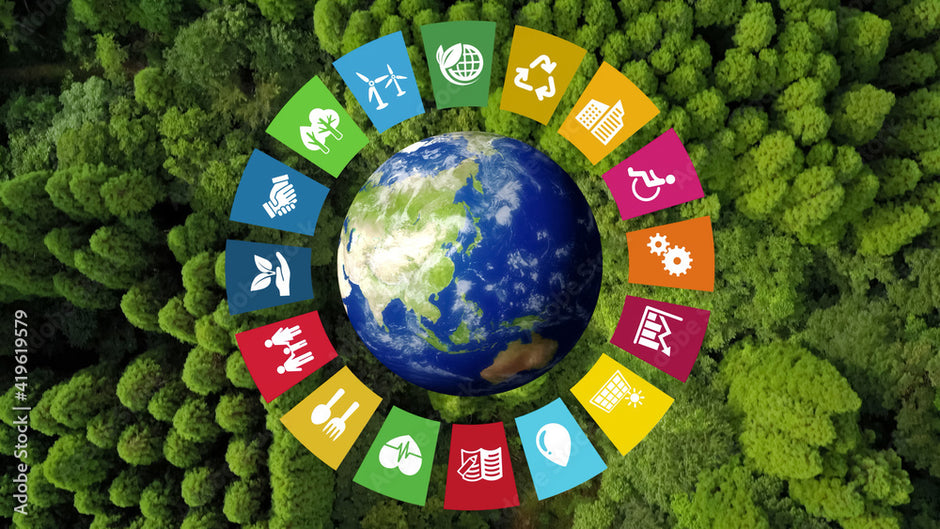Toilet paper is a necessity for most people. And therefore a huge burden on our world. So huge that 27,000 trees are flushed down the toilet daily. This is because much toilet paper is still made from "virgin wood pulp" which means that primary forests are being cut down to make toilet rolls. It's even so serious that "almost half of all primary forests worldwide have disappeared" - WWF deforestation.
Besides trees, the chemical substances used to clean and bleach toilet paper are the biggest culprits. These end up in water or soil during production and flushing, which has a major negative environmental impact. Toilet paper often also has plastic packaging that isn't reusable and will need to be burned extra to not wander around on earth forever. All this leads to much unnecessary deforestation, chemical pollution, and CO2 emissions.
What is Eco Toilet Paper?
To use fewer trees for hygiene paper and give these natural lungs back to the planet, paper manufacturers have started developing eco toilet paper. A good example of this is recycled toilet paper and other organic alternatives. This involves toilet paper made from raw materials from responsible forests, recycled materials, and/or using fewer to no chemicals for making a toilet roll.
Eco toilet paper reduces the environmental impact of toilet rolls by preventing deforestation and degradation, reducing CO2 emissions, energy consumption, and the ecological impact of chemical substances. Below explains what good eco toilet paper is and what the best solution is.

Reducing Environmental Impact as a Consumer
Besides trees being cut down, many chemicals and bleach are needed to make toilet paper. And on top of that, toilet paper is packaged in plastic 9 out of 10 times. Just look in the supermarket around your corner. However, consumers are becoming more aware and want to limit their personal burden on the environment. So what is an environmentally friendly toilet roll and the best solution for our daily needs?
The most important thing for eco toilet paper is the raw material. Because you want to use as few trees as possible for making toilet paper. Sustainable toilet paper is at least a mix of virgin pulp and recycled paper. Better is 100% recycled toilet paper. And in our opinion, a fast renewable plant like bamboo is the ideal raw material for paper disposable products. Bamboo grows up to 30 times faster than trees and can be processed without chemicals. This means that the environmental impact of bamboo toilet paper reduces deforestation, energy consumption, and chemical substances.
Secondly, the toilet paper must be better for the environment by, for example, not adding unnecessary chemicals like bleach and thereby adding extra production processes with additional CO2 emissions. This is also where the problem lies with recycled material because it requires a lot of water and chemical cleaning to make it into a hygienic toilet roll again.
It's not easy for consumers to see the sustainability of toilet paper on packaging. But try to look at the origin of the material (FSC, EcoLabel) and whether the toilet paper is made climate neutral. If the toilet paper is biodegradable, then no chemicals have been added. Finally, the packaging must be taken into account, such as the use of recycled materials for example.
How does Bamboi score on eco toilet paper?
Did you know that Bamboi is made from 100% bamboo from responsible forests, contains no added chemicals in the paper, and our toilet rolls are produced with efficient processes like water recycling. Bamboi bamboo toilet paper is climate neutral, biodegradable, and packaged plastic-free!





































